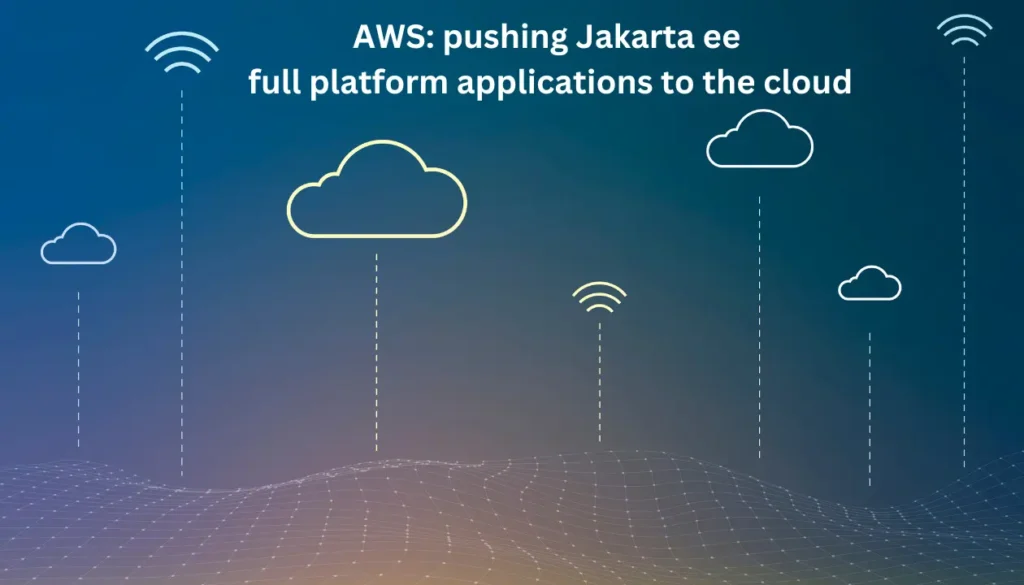In the dynamic landscape of software development, migrating Jakarta EE full platform applications to the cloud has become imperative for staying competitive and ensuring scalability and flexibility. As a leading cloud platform, offers a myriad of tools and services to facilitate this transition seamlessly. This article delves into the intricacies of pushing Jakarta EE applications to the cloud with AWS, exploring various aspects from deployment strategies to optimization techniques.
Embracing Cloud-native Architecture
Understanding Jakarta EE in the Cloud
Jakarta EE, formerly known as Java EE, is a robust platform for developing enterprise-grade applications. When migrating Jakarta EE applications to the cloud, it’s essential to comprehend the architectural nuances and how they align with cloud-native principles.
Leveraging AWS for Cloud Adoption
AWS provides a comprehensive suite of services tailored to different facets of cloud computing. From computing and storage to databases and networking, It offers a versatile ecosystem to host and manage Jakarta EE applications efficiently.
Migration Strategies
Lift-and-Shift Approach
One of the simplest migration strategies involves lifting the existing Jakarta EE application as-is and shifting it to AWS infrastructure. While this approach offers quick migration, it may not fully capitalize on the benefits of cloud-native architecture.
Containerization with AWS ECS
Containerization offers a more granular and scalable approach to deploying Jakarta EE applications on AWS. Leveraging Amazon Elastic Container Service (ECS), developers can encapsulate their applications into containers and orchestrate them seamlessly in the cloud.
Serverless Computing with AWS Lambda
For a more event-driven and cost-efficient approach, serverless computing with AWS Lambda presents an enticing option. Jakarta EE applications can be decomposed into microservices, each triggered by specific events, allowing for optimal resource utilization and scalability.
Deployment Best Practices
Continuous Integration and Deployment (CI/CD)
Implementing CI/CD pipelines streamlines the deployment process, ensuring rapid iteration and seamless integration of new features. Tools like AWS CodePipeline and CodeDeploy facilitate automated testing and deployment, fostering a culture of agility and innovation.
Scalability and Elasticity
AWS offers auto-scaling capabilities, allowing Jakarta EE applications to dynamically adjust resources based on demand. By leveraging services like Amazon EC2 Auto Scaling and Amazon Aurora Serverless, developers can ensure optimal performance without over-provisioning resources.
Optimizing Performance and Cost
Performance Monitoring and Optimization
Monitoring the performance of Jakarta EE applications on AWS is crucial for identifying bottlenecks and optimizing resource utilization. Tools like Amazon CloudWatch provide real-time insights into application metrics, enabling proactive optimization and troubleshooting.
Cost Optimization Strategies
Optimizing costs is paramount in cloud environments, where resource consumption can fluctuate unpredictably. Utilizing AWS Cost Explorer and implementing cost allocation tags can help organizations track and optimize spending, ensuring maximum ROI.
Security and Compliance Considerations
Data Encryption and Access Control
Securing Jakarta EE applications involves implementing robust encryption mechanisms and access control policies. Services like Key Management Service (KMS) and AWS Identity and Access Management (IAM) enable granular control over data and resources.
Compliance and Governance
Compliance with industry regulations and organizational policies is non-negotiable when deploying applications on AWS. Leveraging services like AWS Config and its Security Hub helps maintain compliance posture and enforce governance standards effectively.
Conclusion
Migrating Jakarta EE full platform applications to the cloud with AWS offers unparalleled scalability, agility, and cost-efficiency. By embracing cloud-native architecture, adopting appropriate migration strategies, and leveraging services effectively, organizations can unlock the full potential of their applications in the cloud.

